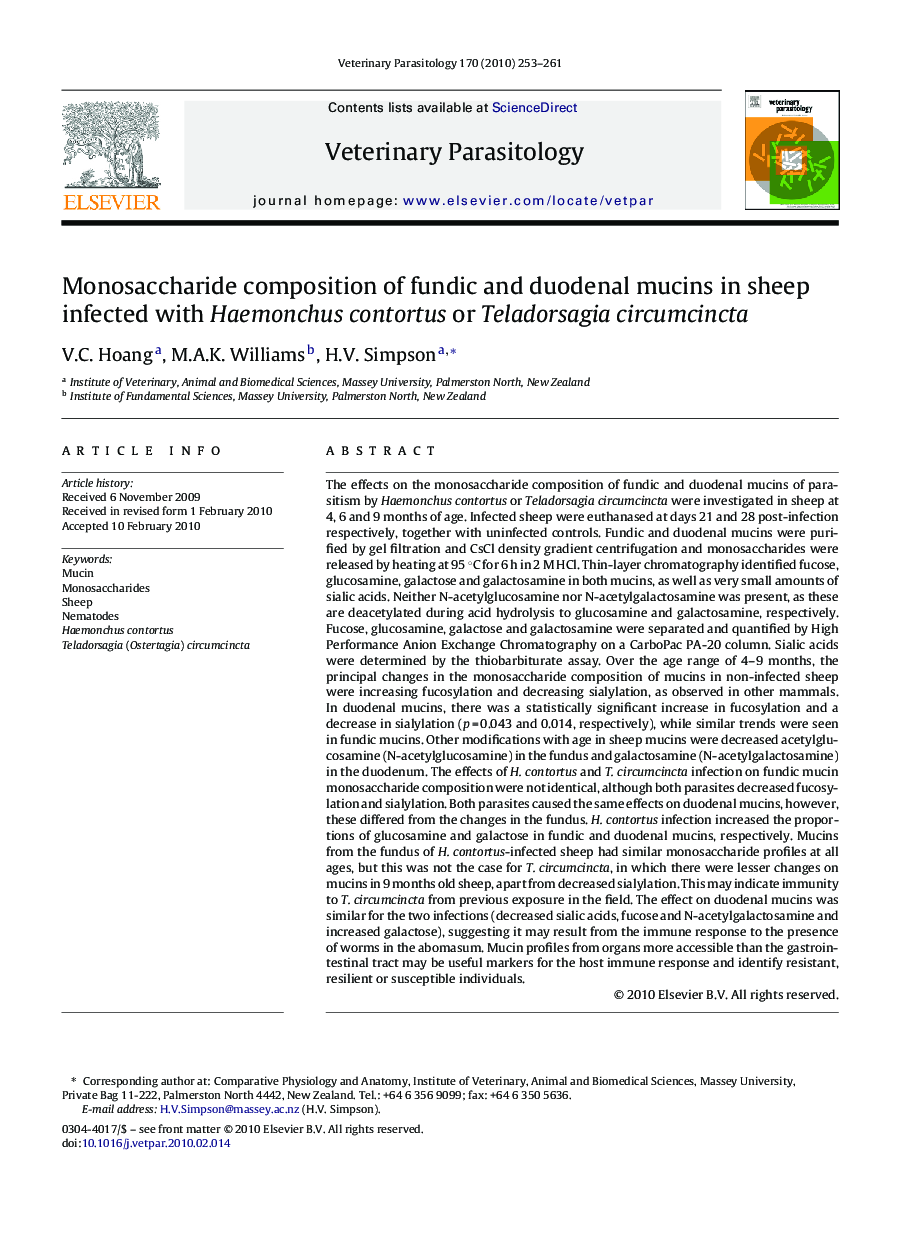| کد مقاله | کد نشریه | سال انتشار | مقاله انگلیسی | نسخه تمام متن |
|---|---|---|---|---|
| 2470611 | 1555740 | 2010 | 9 صفحه PDF | دانلود رایگان |

The effects on the monosaccharide composition of fundic and duodenal mucins of parasitism by Haemonchus contortus or Teladorsagia circumcincta were investigated in sheep at 4, 6 and 9 months of age. Infected sheep were euthanased at days 21 and 28 post-infection respectively, together with uninfected controls. Fundic and duodenal mucins were purified by gel filtration and CsCl density gradient centrifugation and monosaccharides were released by heating at 95 °C for 6 h in 2 M HCl. Thin-layer chromatography identified fucose, glucosamine, galactose and galactosamine in both mucins, as well as very small amounts of sialic acids. Neither N-acetylglucosamine nor N-acetylgalactosamine was present, as these are deacetylated during acid hydrolysis to glucosamine and galactosamine, respectively. Fucose, glucosamine, galactose and galactosamine were separated and quantified by High Performance Anion Exchange Chromatography on a CarboPac PA-20 column. Sialic acids were determined by the thiobarbiturate assay. Over the age range of 4–9 months, the principal changes in the monosaccharide composition of mucins in non-infected sheep were increasing fucosylation and decreasing sialylation, as observed in other mammals. In duodenal mucins, there was a statistically significant increase in fucosylation and a decrease in sialylation (p = 0.043 and 0.014, respectively), while similar trends were seen in fundic mucins. Other modifications with age in sheep mucins were decreased acetylglucosamine (N-acetylglucosamine) in the fundus and galactosamine (N-acetylgalactosamine) in the duodenum. The effects of H. contortus and T. circumcincta infection on fundic mucin monosaccharide composition were not identical, although both parasites decreased fucosylation and sialylation. Both parasites caused the same effects on duodenal mucins, however, these differed from the changes in the fundus. H. contortus infection increased the proportions of glucosamine and galactose in fundic and duodenal mucins, respectively. Mucins from the fundus of H. contortus-infected sheep had similar monosaccharide profiles at all ages, but this was not the case for T. circumcincta, in which there were lesser changes on mucins in 9 months old sheep, apart from decreased sialylation. This may indicate immunity to T. circumcincta from previous exposure in the field. The effect on duodenal mucins was similar for the two infections (decreased sialic acids, fucose and N-acetylgalactosamine and increased galactose), suggesting it may result from the immune response to the presence of worms in the abomasum. Mucin profiles from organs more accessible than the gastrointestinal tract may be useful markers for the host immune response and identify resistant, resilient or susceptible individuals.
Journal: Veterinary Parasitology - Volume 170, Issues 3–4, 24 June 2010, Pages 253–261